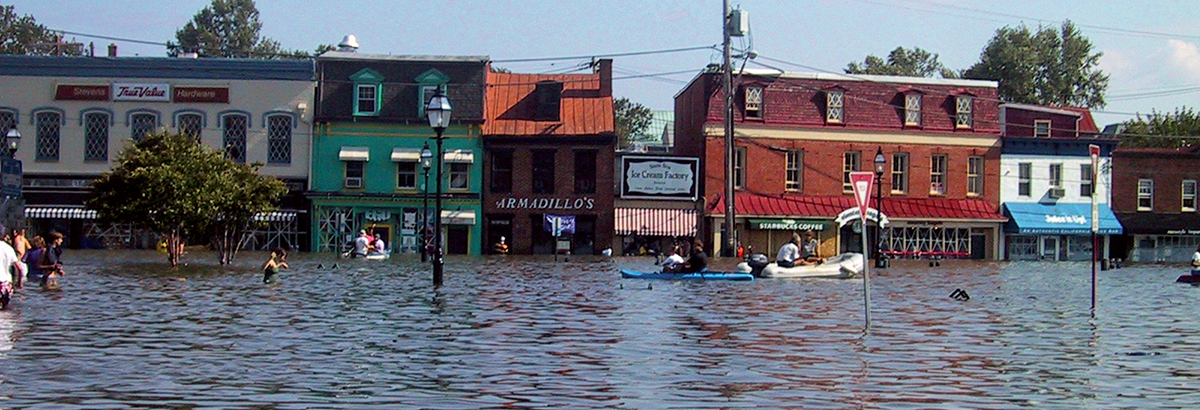On September 16th, Climate Central released an updated version of its Surging Seas report, which maps out the impacts our coasts could face from storm-driven flooding as sea levels continue to rise.
The report shows that, in our region, Norfolk, Ocean City, Baltimore’s Inner Harbor, Annapolis and many communities along the Potomac are especially vulnerable.
As the Baltimore Sun reported, the Climate Central analysis estimates that sea level rise has already increased the likelihood of extreme floods by around 20 percent in areas in and around Baltimore and Annapolis. Looking ahead, more than $19.6 billion in property value in Maryland lies within five feet of the high tide line, putting it risk of storm-driven flooding under intermediate sea-level rise projections. As reported by the Washington Post, Washington, D.C. could be at risk of an 8-foot flood every ten years by 2100, when Atlantic Coast sea levels are projected to have risen by at least 2 to 4 feet. In that scenario, storm surges would put upwards of $7 billion in property at risk, including much of the National Mall and three military bases.
The report comes with an interactive map tool (see below), which you can use to see how different amounts of sea level rise and storm surges will impact coastal areas, on a neighborhood-level scale, matched with timelines of risk. This map also provides statistics of population, homes and land affected by sea level rise at the city, county and state level, plus links to fact sheets, data downloads, action plans, and more.
The same day that the Climate Central report was released, the Maryland Department of Natural Resources, in conjunction with George Mason University and the Climate Communication Consortium of Maryland released a survey on Marylanders’ views of climate adaptation and sea level rise.
With the survey results, comes hope for action. Seventy-three percent of Marylanders want state and local governments to protect their communities from the impacts of climate change, and the majority said shielding coastal areas from sea-level rise should be a high or very high priority.
As lawmakers across the region debate fracking, the EPA’s proposed carbon rules, and other measures to shape our energy future, these reports should sway our decision-makers to make clean energy solutions a priority across the Mid-Atlantic. While we need to adapt to the sea level rise already locked in from the burning of fossil fuels, we also need a rapid transition to clean energy and energy efficiency technologies to prevent worst-case flooding scenarios.
Check out the reports here:
Climate Communications Consortium of Maryland: Adapting to Climate Change & Sea Level Rise
Climate Central: Surging Seas
For news coverage:
Washington Post: Flooding from storm surge would threaten D.C. infrastructure, report says
Baltimore Sun: Maryland faces worse climate-driven flooding, report warns






